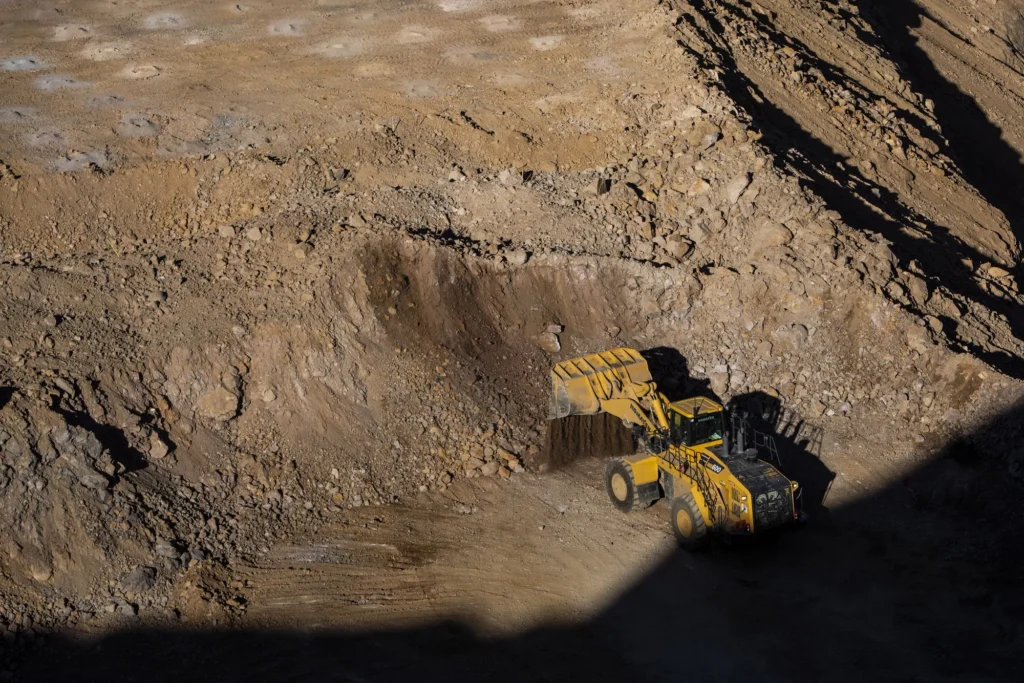As the global race for critical minerals intensifies, industry leaders are increasingly warning that the United States risks falling behind China unless it dramatically increases investment in mining and processing capabilities. A prominent mining investor has emphasized that critical minerals—vital for everything from electric vehicles to renewable energy and defense technologies—are no longer just a supply chain concern but a strategic imperative for national security.
The Stakes: Critical Minerals and Global Competition
Critical minerals such as lithium, cobalt, nickel, rare earth elements, and graphite are essential components for modern technologies:
- Energy Transition: Electric vehicle batteries, wind turbines, and solar panels rely on these minerals.
- Defense Applications: Advanced electronics, guidance systems, and military hardware require stable access to high-grade minerals.
- Technological Leadership: Semiconductors, AI infrastructure, and other high-tech industries depend on minerals that are often concentrated in a few countries.
China currently dominates the supply chain for rare earths and other critical materials, controlling both mining output and downstream processing. This dominance has prompted U.S. policymakers and investors to warn about strategic vulnerabilities in energy, technology, and defense sectors.
Investor Perspective: Outspending China
The mining investor, who has been active in both exploration and extraction ventures, stresses that the U.S. must:
- Increase Mining Investment
- Expand domestic exploration and production of critical minerals.
- Modernize existing mines and develop new projects to reduce reliance on foreign sources.
- Develop Processing Capabilities
- China controls much of the refining and processing infrastructure, giving it leverage over global supply chains.
- The U.S. must invest in facilities that convert raw minerals into battery-grade or industrial-grade materials.
- Strategic Stockpiling and Research
- Establish reserves of critical minerals to mitigate supply shocks.
- Fund research into alternative materials and extraction technologies to enhance domestic resilience.
The investor emphasizes that these measures are not just about economics—they are strategic imperatives to maintain technological and geopolitical leadership.
China’s Current Dominance
China’s stronghold on critical minerals stems from several factors:
- Extensive Mining Operations: China produces a substantial share of global rare earths, lithium, and other essential minerals.
- Processing Infrastructure: Over 70% of global processing of rare earths occurs in China, allowing it to control the value chain.
- Strategic Policy: Long-term industrial and trade policies have prioritized securing supply chains for high-tech and defense industries.
This dominance has created vulnerabilities for countries like the U.S., which import a significant portion of their critical minerals.
U.S. Response and Policy Measures
The U.S. government has begun initiatives to address these gaps:
- Inflation Reduction Act and Funding for Critical Minerals
- The act includes subsidies and tax incentives for domestic production and recycling of key minerals.
- Encourages investment in battery manufacturing and renewable energy supply chains.
- Strategic Minerals Reserve and Partnerships
- Proposals exist for a national reserve of essential minerals, reducing dependence on imports.
- Partnerships with allies such as Australia, Canada, and Japan aim to diversify supply sources.
- Regulatory Streamlining
- Efforts to accelerate permitting and environmental approvals for mining projects are underway, addressing one of the major bottlenecks in domestic production.
Despite these measures, investors argue that capital investment still lags behind China’s scale, leaving the U.S. at risk of supply chain disruptions.
Economic and Strategic Implications
- Energy Transition Acceleration
- The U.S. push for electric vehicles, wind, and solar requires a reliable supply of lithium, cobalt, and nickel.
- Falling behind in mining and processing could delay the clean energy transition.
- Defense and National Security
- Critical minerals are essential for military technologies, including missile guidance systems, stealth technology, and communications infrastructure.
- Dependence on foreign sources could compromise national security in geopolitical conflicts.
- Technological Leadership
- Semiconductors, AI hardware, and advanced electronics depend on minerals that are increasingly scarce.
- U.S. companies risk losing competitiveness if China retains processing dominance.
Investment Opportunities
For investors, this environment presents significant opportunities:
- Domestic Mining Projects: Companies developing lithium, cobalt, rare earths, and nickel mines may benefit from government incentives and rising demand.
- Processing and Refining Ventures: Investments in refining capacity are likely to yield strategic and financial returns.
- Innovation in Recycling and Alternative Materials: Technologies that recover or substitute critical minerals could become highly profitable in the coming decade.
Challenges
Despite the urgency, scaling up U.S. production faces challenges:
- Environmental Regulations: Mining projects must navigate stringent environmental standards.
- Capital Intensity: Developing mines and processing facilities requires billions of dollars and years of development.
- Global Competition: China continues to expand production and processing, maintaining cost advantages.
- Skilled Labor and Technology: Advanced processing requires expertise and specialized technology, which are not yet fully scaled domestically.
Conclusion
The mining investor’s warning underscores a critical reality: the U.S. cannot afford to fall behind China in critical minerals. These resources are essential not only for economic growth but for national security, technological leadership, and the energy transition.
Outspending China in exploration, extraction, and processing of critical minerals is increasingly framed not as a business decision, but as a strategic imperative. As global demand for clean energy, advanced electronics, and defense technologies grows, the race for mineral dominance may well define the geopolitical landscape for decades to come.



